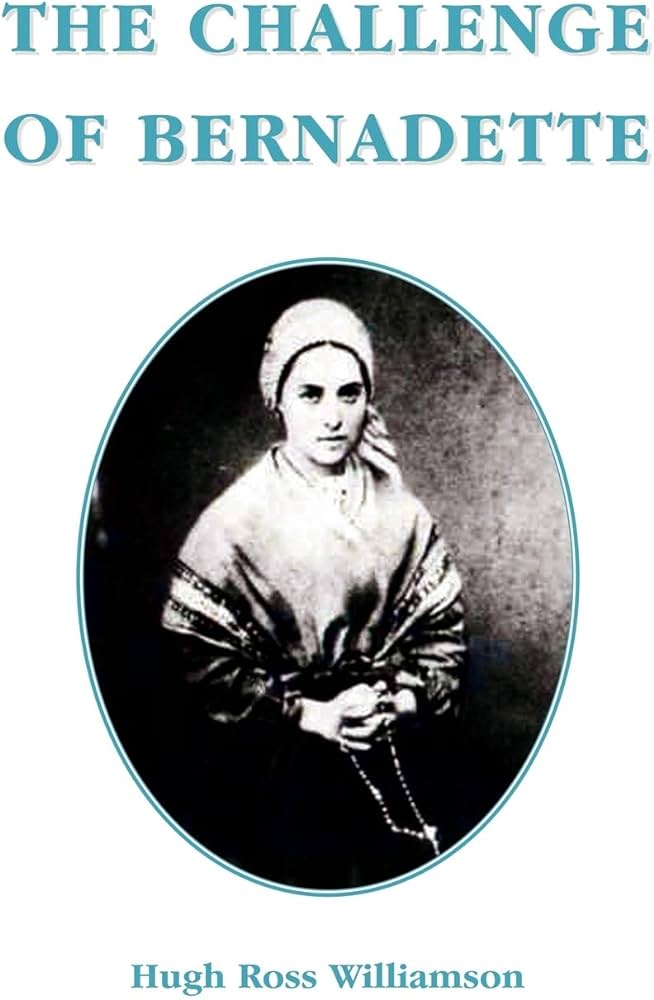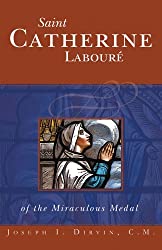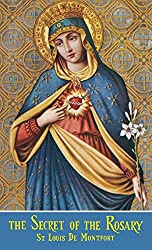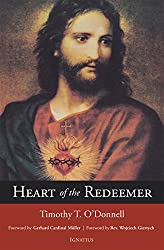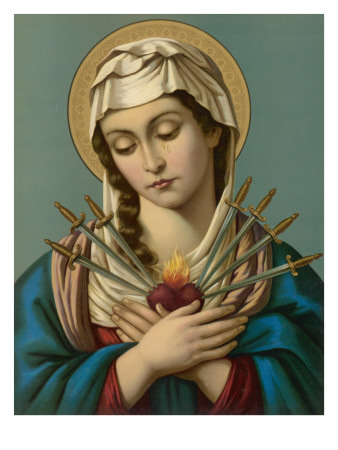
September is the month dedicated to the Seven Sorrows (or Dolors) of the Blessed Virgin Mary. Originally, it was the order of Servites who propagated this devotion, praying the Rosary of the Seven Sorrows of Mary and solemnly celebrating the Feast, now fixed on the 15th of September.
This Feast follows immediately after the celebration of the Exaltation of the Holy Cross, on the 14th of the month. This emphasises Mary’s involvement with the mystery of Salvation, as she stood weeping in deep sorrow at the foot of the cross.
The Seven Sorrows of the Blessed Virgin Mary are often depicted by an image, where Our Lady’s Immaculate Heart is pierced by seven swords. Her sorrow is evident in the expression on Her face, usually accompanied by plentiful tears. The Sorrows themselves point to seven mysteries of deep suffering, in the life of Mary. They are as follows:
1. Mary’s sorrow, when She receives the prophecy of Simeon, whereby a sword will pierce Her Heart (St. Luke, ii: 34-5).
2. Mary’ sorrow, when She must flee with Her Baby Jesus and husband Joseph – the flight into Egypt (St. Matthew, ii: 13-4).
3. Mary’s sorrow, when, with Joseph, she seeks Her young Son Jesus, lost in Jerusalem (St. Luke, ii: 43-45).
4. Mary’s sorrow, when She meets Her Beloved Son, carrying His cross on His way to Calvary (St. Luke, xxiii:26-7).
5. Mary’s sorrow, as She stands at the foot of the Cross and witnesses the death of Her Beloved Son (St. John, xix: 25-7).
6. Mary’s sorrow, as the body of Her Beloved Son, is taken down from the Cross (St. Matthew, xxvii: 57-9).
7. Mary’s sorrow, at the entombment of Her Beloved Son (St. John, xix: 40-2).
The Rosary of the Seven Sorrows, as originally prayed by the Servites, is composed of seven sets of seven beads, separated by a medal, on which is depicted the particular Sorrow of Our Lady.
It is prayed in a similar way to the Holy Rosary, with one Our Father, followed by seven Hail Mary’s. Before each septet, is a short reflection on the particular Sorrow prayed. The prayer concludes with three Hail Mary’s, incited to procure true sorrow and the intention to model one’s life on Our Blessed Lady’s.
We can see therefore, how the Seven Sorrows of Mary are often understood as an extension of the Sorrowful Mysteries of the Holy Rosary. Yet, they are very different, in that they focus solely on the pain and suffering of Our Lady, in relationship with and on behalf of Her Son.
They reveal Her undivided union with Him – in that all He suffers, so does She.
Some years ago, my husband Roger gave me a small gift, The Secret of the Rosary by St. Louis de Montfort. It was an old copy of the book and on the front is a beautiful and unusual image of Our Lady.
The image is composed of both Eastern and Western elements. Our Lady’s face looks somewhat oriental and She ports a mantle and head-dress of that style, with a golden star on Her forehead.
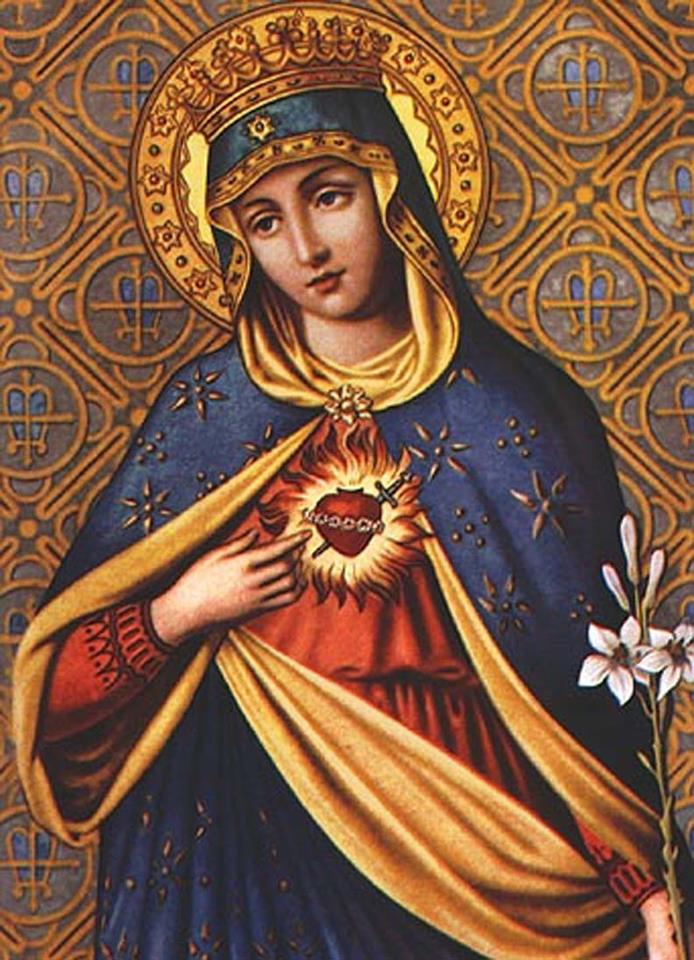
Yet, the depiction of Her Heart, the dress beneath the mantle, the patterning in the background and the fact that She is holding a white lily, resemble many Western images of Mary.
In this picture, Our Lady’s right hand is pointing to Her Heart. And Her Heart is not only depicted as Immaculate, with the customary crown of pink roses and blazing with the fire of Her tender love. Her Heart is wounded by a sword, which pierces It right through.
One cannot imagine the agony endured.
And this image points to the first of the Seven Sorrows of Mary, the prophecy of which Simeon spoke to Our Blessed lady in the temple, when there, She presented him, Her Divine Son. Simeon said:
Behold this child is set for the fall, and for the resurrection of many in Israel, and for a sign which shall be contradicted;
And thy own soul a sword shall pierce, that, out of many hearts, thoughts may be revealed Luke ii: 34-6.
Luke ii: 34-6
Now, this particular image of the Sorrowful and Immaculate Heart of Mary is connected to a Belgian mystic, Berthe Petit (1879-1943). She was a Franciscan tertiary, who, throughout her life, received messages from Our Lord about the Sorrowful Heart of the Blessed Virgin.
The image was mysteriously discovered in a school where the mystic has been educated. The Bernadine nuns who found it and Berthe Petit herself, then, propagated devotion to the image and it soon spread throughout Belgium and further afield. Many favours have been granted due to its veneration.
The reason the image spoke so deeply to Berthe Petit was this. On September 8th, 1911, Our Lady’s birthday, Our Lord had given her this message:
The Heart of My Mother has the right to be called Sorrowful and I wish this title placed before that of Immaculate because she has won it herself … She has earned it by her identification with My sorrows; by her sufferings; by her sacrifices …
Whilst we feel sorrow, in our own limited way, the sheer depth of Our Lady’s sorrow is unimaginable.
She feels and endures everything her Son experiences, each joy and every pain. All that He does and all that He undertakes, She experiences in Her own Heart.
What can we say?
First of all that the first of the Seven Sorrows of Mary, depicted in this mysterious Belgian image, underlies each and every other Sorrow.
It is just as Simeon prophesised – each time Our Lady experiences sorrow, it is as though a sword pierces through Her Heart. This is how deeply She feels.
But, we could also say that Mary’s sorrow is felt most fully as She stands at the foot of the Cross. For there, Her Heart is pierced right through with agonising sorrow, at the death her Son endures.
This is expressed with the words Our Lord also declared to Berthe Petit, when He said:
Her immolation in Calvary [was] endured in perfect correspondence with My grace for the salvation of mankind.
The Catechism of the Catholic Church writes of this union between mother and Son and how Mary is wholly united with Him, particularly in His Passion. It states:
This union of the mother with the Son in the work of salvation is made manifest from the time of Christ’s virginal conception up to his death; it is made manifest above all at the hour of his passion:
Thus the Blessed Virgin advanced in her pilgrimage of faith, and faithfully persevered in her union with her Son unto the cross.
There she stood, in keeping with the divine plan, enduring with her only begotten Son the intensity of his suffering, joining herself with his sacrifice in her mother’s heart, and lovingly consenting to the immolation of this victim, born of her: to be given, by the same Christ Jesus dying on the cross, as a mother to his disciple, with these words: “Woman, behold your son.’ [Italics mine]
Catechism of the Catholic Church 964
At his moment, when our dying Saviour spoke these words to His Blessed Mother, She took on a new suffering – the suffering She would endure for us, sinful humanity.
For, now She would suffer for our sinfulness, as She does, watching and feeling sorrow in Her Heart, whilst we abandon Her Son for our iniquities.
Those very iniquities which caused Her immeasurable sorrow, for they necessitated the sacrifice of Her only Son, Whom She watched die, whilst She stood at the foot of the Cross.
Whilst He suffered immeasurable pain in His body, from which grace poured forth, She suffered in Her Heart, sorrow, just as deep and immeasurable.
The Seven Sorrows of the Blessed Virgin Mary take us through the intimate human suffering shared between mother and Son.
They bring us deeply into the mystery of Salvation, seated within their relationship, or union. It is a union that will remain forever unbroken.
For these two, God and creature, Divine Son and His Blessed Mother are so intertwined and interlinked, in mission, in flesh, in suffering and in love. They are eternally inseparable.
Therefore, pondering the Seven Sorrows of Mary can only deepen our understanding of the Divine mission of Salvation, in which She plays a crucial part.
And I will leave you with a deeply moving image, of Mary standing at the foot of the Cross, pierced through with anguish and sorrow. It is an image, beautifully encapsulated by these words in the St. Andrew’s missal:
Mary stood at the foot of the Cross where Jesus was hanging and, as Simeon had prophesised, a sword of sorrow pierced her soul.
Powerless, “she saw her sweet child desolate in the anguish of death, and she received His last breath” (Sequence).
The compassion which her maternal heart felt at the foot of the Cross obtained for her as its reward the palm of martyrdom without death.
Mary’s sorrow can do nothing but render sorrow in our own poor hearts. She is a continual martyr for our sins.
Let us pray to Her, for the deepening knowing in our minds and hearts of the tragedy of this world that we may more effectively be ready to help.
Our Lady of the Seven Sorrows, pray for us.
Update 2017 and 2023:
I would just like to add to this page that my husband Roger Buck also has a two-part EWTN interview about his conversion to the Faith as well as the Sacred Heart.
The first part is more about the New Age (from which he converted) but in the second part he talks about our experiences on pilgrimage to Paray-le-Monial in France, experiences which completely changed both of our lives and led to the creation of this website dedicated to His Most Sacred Heart.
Foreword for Monarchy by Roger Buck
Buying Books at Amazon Through These Links Gives Us a Commission. This Supports Our Apostolate. Thank You if You Can Help Us Like This!

